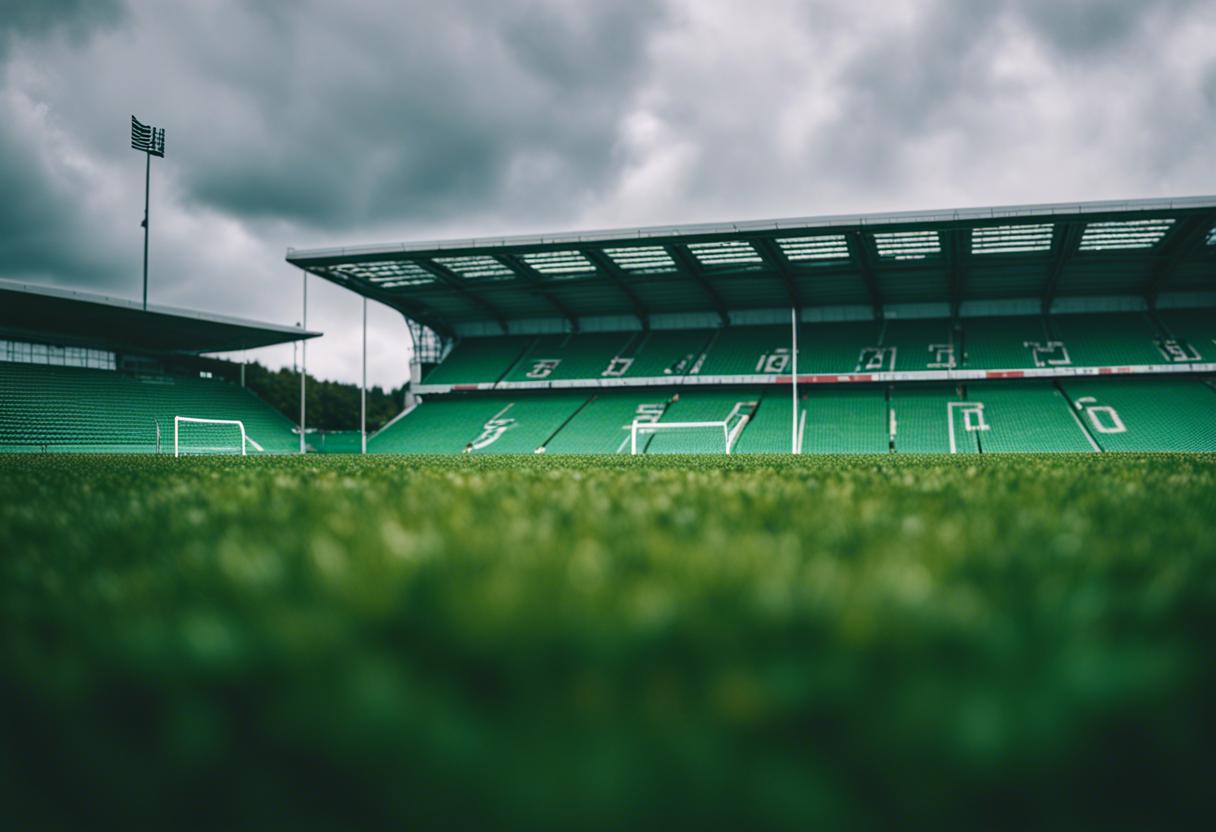Ireland’s side backs persist as a major concern. Following the Belgium match in March, Ken Early remarked that John O’Shea and his Irish team were adopting strategies synonymous with Xabi Alonso and emulating the style of the Bundesliga titleholders. Players such as Jeremie Frimpong and Alejandro Grimaldo, exceptional in Leverkusen’s winning tactics, stood out as top performers in those roles, delivering commendable scoring and assisting records. They epitomise energy, with Frimpong renowned as one of the speediest global players.
That said, it seems improbable that Alonso would choose side backs identical to Matt Doherty and Robbie Brady were he commanding the Irish team. While the two 32-year-olds have had previous experience posing offensive threats at a higher level, they now struggle to sustain their performance throughout the match and make contributions at both ends. Their slowed pace often leaves them trailing in one-on-one match-ups, as evident in their interactions with Anthony Gordon and Bukayo Saka during the Saturday game.
Although it’s not greatly surprising that they falter against such high-level wingers, the need for more speed in such positions is critical. Even when pitted against milder adversary sides, the five-at-the-back system’s effectiveness diminishes significantly in the absence of fast-paced players.
Observing England’s performance during Lee Carsley’s first tenure, the team introduced a refreshing sense of freedom, especially in the first half of the game. Encouragingly, their second goal seamlessly merged efforts from Declan Rice, Kobbie Mainoo, and Saka, with Jack Grealish leading the final attack. This performance set the stage for Carsley’s tenure.
Some significant takeaways surfaced from Ireland’s defeat to England in the Nations League. Hallgrímsson, expressing the urgency of maintaining momentum before facing Greece, acknowledged that the likelihood of Séamus Coleman joining the match was slim. On his maiden appointment, Carsley adeptly navigated the challenges of England’s manager role, resulting in a commendable initial performance.
Taking a less defensive approach with the right-back role, Trent Alexander-Arnold was favoured over the likes of Kyle Walker, functioning as a midfielder in the first half of the match, successfully emulating his exceptional performance with Liverpool. His remarkable long-distance pass facilitated the scoring of the initial goal, dismantling the Irish defence. Selecting Grealish as a number 10, a previous peripheral player under Southgate, rekindled memories of his standout performances with Aston Villa, prior to his transition to Manchester City where he adopted a role as a more systematic player. Should Carsley evade the dreary culture conflicts, he may hold a promising career as the manager of the England team.
Kelleher’s excellent performance calls for Liverpool exit
Among the many positives from the match was the display of Ireland’s robust goalkeeping prowess. Caoimhín Kelleher’s performance was faultless, despite the two score points, making a few impressive saves. One such save from Gordon in the first half indirectly led to Rice’s score point. He also proved instrumental in reducing the score gap with his notable second-half saves.
However, the future of Kelleher at Liverpool remains uncertain following the club’s decision to sign Giorgi Mamardashvili, who will join the next season. Coupled with the fact that Alisson Becker will continue his role as the first-choice goalkeeper or number one, it becomes imperative for Kelleher to consider other club opportunities for more gameplay experience.
Kelleher, a native of Cork, possesses the potential to thrive in any Premier League club situated below the top rankings or any club beyond England, should such an opportunity arise. Yet, the onus of making an impactful move to showcase his skillset remains on him. In the future, Ireland can rely on Gavin Bazunu, Southampton’s goalkeeper, who was not able to play due to injury.
The statistics reveal England’s command over the game
The figures from Ireland’s clash with England present a disheartening picture. Only achieving 29 per cent possession in their home turf, one successful shot on target, and one corner, Ireland could only complete 147 passes compared to England’s commanding 636. The formidable English opposition dictated the game, with Ireland struggling to gain control in Heimir Hallgrímsson’s debut performance as the coach.
The Icelandic man indicated that the team’s evident lack of confidence and initiative was partly responsible for their defeat, as players failed to demonstrate technical skill and composure when in possession of the ball. Ireland’s strategy of conceding the midfield to England’s skilled midfielders aggravated the situation, culminating in a disappointing night.
The Irish fans were vociferous in their support but their cheers long for triumphs to celebrate.
In the pre-match programme, Paul Cooke, the president of the FAI, rallied the Irish spectators to make a tremendous racket at the Aviva Stadium. Although the area was filled with deafening noise in the 10 minutes preceding and the 15 minutes following the match, some of this came from the robust booing of Rice, Grealish and God Save the King. Yet, as England clearly surpassed Ireland, the sounds of cheer gradually subsided during the first half. The stark disparity between team’s abilities left little cause for celebration as the game concluded.
Cooke took advantage of the pre-match programme to passionately advocate for greater funding for football in Ireland. He asserted that the youth, some of whom may have been witnessing the game that night, deserve top-notch centres, academies, and opportunities to reach their peak, irrespective of their skill level. Cooke expressed the need for significant change if Ireland is to narrow the chasm with England and reinstate the fiercely contested matches reminiscent of the 1980s and 1990s.

